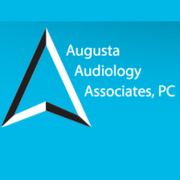
If you've experienced hearing loss, you can still navigate daily life with the help of a wide range of hearing aid options that can help you navigate daily life. The device that’s best for your situation depends on both the type and severity of your hearing loss as well as your age. Here's a breakdown of some of the most common hearing aid options.
Types of Hearing Aids
1. Completely-in-the-Canal
Completely-in-the-canal (CIC) hearing aids (also known as invisible-in-the-canal (IIC)) are the smallest and least conspicuous variety. They go inside the ear canal and are almost impossible to see. They also don't pick up wind noise. Because they're so small, they can only fit smaller batteries which need to be changed frequently. They work best for adults whose hearing loss isn't severe.
2. In-the-Canal
 In-the-canal (ITC) hearing aids are molded to fit in your ear with part extending into the ear canal. They have more features than smaller hearing aids, such as volume control and directional microphones that are better at picking up sounds from in front of you. They work for a wider range of people than CIC styles too.
In-the-canal (ITC) hearing aids are molded to fit in your ear with part extending into the ear canal. They have more features than smaller hearing aids, such as volume control and directional microphones that are better at picking up sounds from in front of you. They work for a wider range of people than CIC styles too.
3. In-the-Ear
These sit in the outer bowl of your ear and are even larger, meaning they can fit bigger batteries and more features. They work for patients with almost any degree of hearing loss, from mild to severe. Although they're more visible, they're comfortable to wear and easy to use.
4. Behind-the-Ear
This type of hearing aid is made up of two pieces connected by a tube or cord. The earpiece sits in the ear canal, and the main body of the hearing aid sits behind the ear. This type works for both children and adults with a wide range of hearing abilities. Modern options can be inconspicuous.
If you need help with your hearing loss, contact Augusta Audiology Associates, PC in Fishersville, VA. For 25 years, we have provided comprehensive hearing care and hearing loss treatment to patients of all ages. To schedule an appointment, call (540) 332-5790.
About the Business
Have a question? Ask the experts!
Send your question

